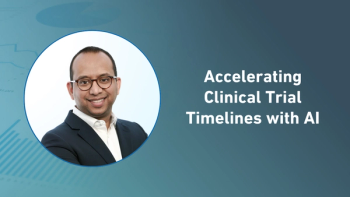At SCOPE Summit 2025, two of the most-watched discussions focused on the industry’s push toward smarter, more efficient trials. Rajneesh Patil, vice president, digital innovation, IQVIA, shared how AI and machine learning are driving advances in risk mitigation, from patient recruitment to pharmacovigilance. Drew Garty, chief technology officer, clinical data, Veeva, discussed how pragmatic trial designs can help close the gap between controlled clinical research and real-world treatment, streamlining protocols and improving patient access worldwide.
ACT: Can you share a few examples of how artificial intelligence/machine learning (AI/ML) can mitigate risks that have traditionally impacted clinical trial success?
Patil: While there are quite a few areas which can help improve the overall cycle time and clinical development, we are seeing some specific areas around trial feasibility, so site selection, patient selection, types of algorithms, which are AI driven, are helping us improve on metrics of patient recruitment rates, non-enrolling sites is another key metric, so a lot of our sponsors are looking to solve for these problems. Those are a couple areas. In the pharmacovigilance space which relates to patient safety, monitoring, etc., there is a huge opportunity, and we are seeing some value there in terms of automating some of those workflows in pharmacovigilance. Signal detection is one. These models are great at detecting safety signals if we can prompt them adequately and following that even the workflow automation of some of these next best action types of capabilities is another area where we're seeing significant improvements.
ACT: What are some of your key takeaways from the panel you participated in on pragmatic trials?
Garty: Going in, pragmatic trials really talk about the delta that we have, I think, between the traditional clinical research that we have in the real world, and there's a gap that when you go through that you prove efficacy in a controlled environment, that doesn't actually mean that you are set up for success in the real world. There's a lot of policy that actually has to be changed in terms of recommendations of which therapies to treat with, so we need to bring in if we want to close the gap between when a Phase III trial ends and hospitals start administering the use of the products, we actually have to close that gap down. In a way, pragmatic trials are then feeding upstream into Phase III trials and giving us the ability to simplify and standardize what we do. A good example of reducing the costs and complexities of protocols, decreasing the amount of procedures a patient might have to endure, and even where they are in the world. All of those things can be addressed with what we have in terms of tools and capabilities, but we need to focus as an industry.






.png)



.png)



.png)
.png)
